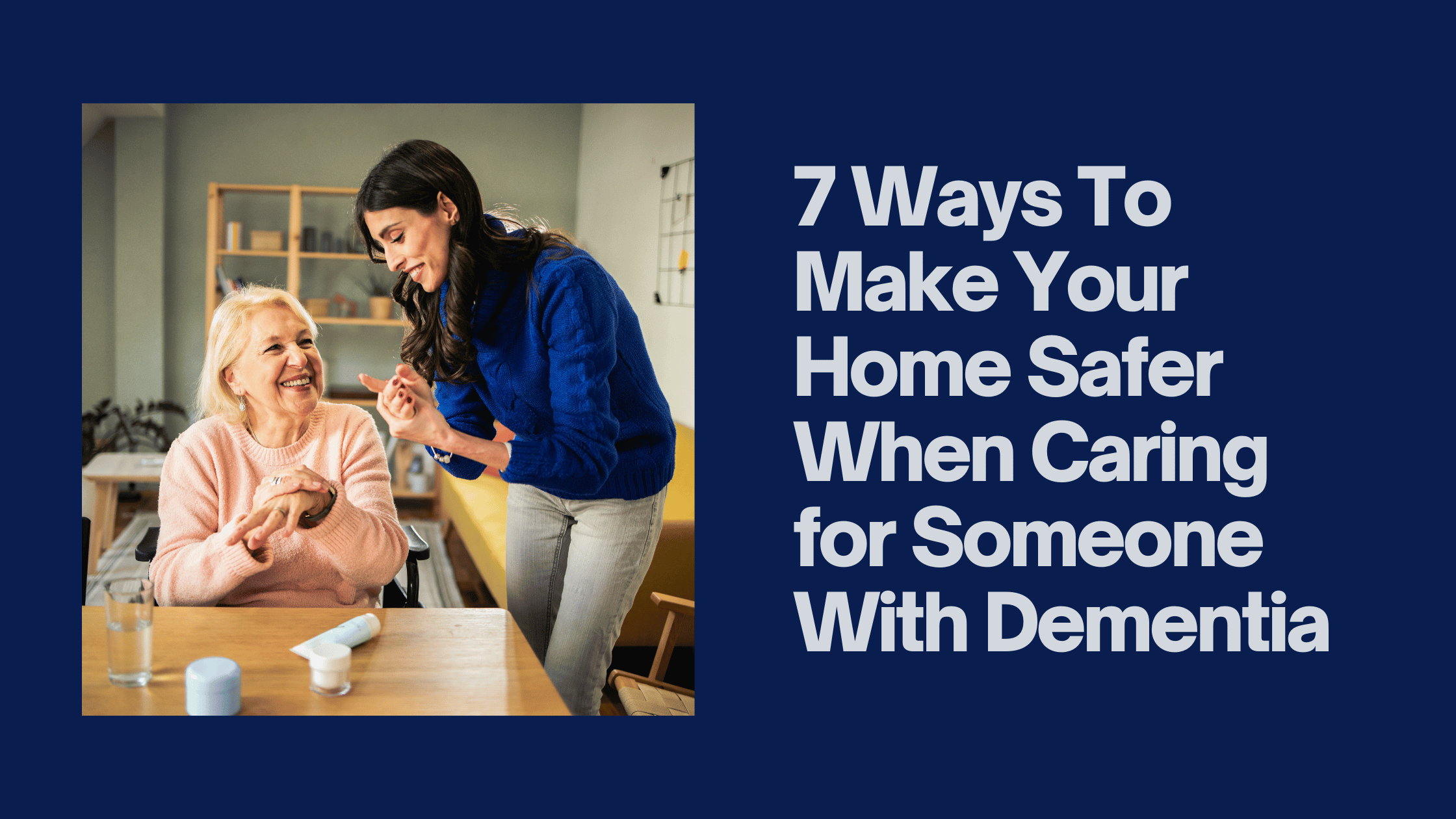Essential safety modifications for dementia care at home, including lighting, hazard removal, and assistive technology recommendations.
The following is a guest post from my bloggy friend Taylor McKnight. Interested in having a guest post on my website? Click here for my guest post submission form.
Home Safety for Dementia Caregivers: 7 Life-Changing Modifications
Dementia is a condition that is characterized by the loss of cognitive functioning. It impacts your ability to think, remember and reason. Some people may experience significant personality changes as their condition evolves. It is a progressive disease that can range in severity with no known cure. Unfortunately, with this in mind you will want to make sure to take the right precautions for those loved ones experiencing any signs or forms of this horrid disease.
The Importance of a Safe Environment for Someone With Dementia
The symptoms associated with dementia (like confusion and memory loss) can make it difficult to continue living independently at home. However, you can have a positive impact by modifying their living space to accommodate their needs. Simple changes around the home can make it easier for them to engage in their daily routines safely and comfortably. Here are some quick and easy tips for setting up a living space for someone with dementia.
1. Ensure There Is Good Lighting
If dark or inconsistent lighting is an issue in the home, it’s time to brighten things up. Darkened corners can cause distress and make it difficult to see. Good lighting is important for someone with dementia and can help them make sense of where they are. If there are objects blocking windows, such as furniture or dark curtains, remove them. You can also provide low lights if the individual prefers and there is enough visibility to see the surroundings properly. You never know with certain individuals as brighter lights could be overbearing or hurt someone’s eyes.
2. Remove Trip Hazards Around the Home
Dementia affects numerous cognitive functions, including judgment and motor coordination. These issues can make it hard to recognize potential dangers around your home. Trip hazards like rugs, mats and cables are dangerous and can increase the risk of a serious fall, which can have dire consequences. Ensure that cords remain neatly tucked away, and remove any rugs and mats throughout each room. There are items you can purchase that can assist with this, such as stickers to place under items so they are not movable for those that can take a tumble.
3. Improve Spatial Awareness With Contrasting Colors
People living with dementia struggle with visual clarity, which can make furniture and other objects difficult to see. Brightly colored furnishings that stand out against the floors and walls can improve spatial awareness and reduce the risk of bumping into things or falling. However, keep in mind that colors like bright red, orange and purple can be overstimulating. A toilet seat contrasting with the rest of the bathroom and brightly colored dishware can help improve visual acuity and orientation in the kitchen. Make sure the colors while contrasting are not too bright and more so are cool or neutral in pigment.
4. Place Reminders Around the Home
Visual reminders placed around your house can be effective tools for helping someone with dementia go about their daily routine. Clearly label cabinets, rooms and drawers with either pictures or words to help them locate important items. You can place notes in strategic locations, like next to the coffee maker or bathroom mirror, as reminders of daily activities. You will definitely want to monitor someone affected with dementia before doing this to make sure their daily routine stays consistent and check in with them periodically even if the notes are placed.
5. Use Medical Alert Devices
As a result of confusion or disorientation, people living with dementia may experience episodes of wandering. It is a significant safety concern that can quickly place them in dangerous situations. Medical alert devices can help them easily call for help, even with limited communication skills. They are also an effective way to alert emergency services or caregivers if they are in danger. When selecting a device, make sure it is simple to use, waterproof and durable.
6. Simplify the Bathroom for Easier Navigation
Modifying the bathroom and prioritizing safety can make it easier for someone with dementia to continue living independently for as long as possible. Use contrasting colors to highlight the shower and toilet seat. Keep the area well-lit, and consider replacing toilet paper and towels with colors that contrast with the walls or vice versa if you need to do some interior design and repaint or redecorate an area.
7. Install Safety Equipment and Assistive Technology
Equipment like guardrails, smoke alarms and sensors can help keep someone living with dementia safe at home. These items don’t have to be expensive or complicated. You can also find products and home goods specifically designed for individuals with dementia. These items include clocks featuring large LCD displays and telephones with large buttons. Installing safety equipment and assistive technology is a simple yet effective way to positively impact their quality of life and assure that your loved one is safe and being taken care of even when you are not around.
Caregiving can be a rewarding role and may strengthen the relationship you have with your loved one. However, providing continuous care and support for someone with dementia can put a strain on even the most resilient people. For additional support and guidance, head over to The Caregiver’s Voice or SureSafe. On these sites, you’ll find useful information and advice from people who understand the many challenges and rewards of providing compassionate care for loved ones with dementia along with other sicknesses or disabilities.
Written by Taylor McKnight, Author for SureSafe






